Review Summary
Expert Rating
The latest smartphones, especially the premium ones, pack in so many features that one can’t help but be amazed. Quad-camera arrays, 100X zoom, high-refresh AMOLED displays, hole-punch displays, in-display fingerprint sensors, unbelievable charging speeds, reverse wireless charging… are just some of the features you can expect.

Vivo has been one of the main brands at the forefront of smartphone innovation in recent times and the company has now come out with another innovative product. The Vivo X50 Pro is the first phone with a gimbal camera. For the uninitiated, most smartphone use OIS (optical image stabilisation) or EIS (electronic image stabilisation) for reducing shake while taking photos and shooting videos. The X50 Pro uses a gimbal mechanism on its camera which physically moves the lens across three axes to provide incredible stabilisation. In this review, I shall try to answer how good this gimbal system really is and what else the X50 Pro brings to the table.
Verdict
While Vivo is undeniably brings true innovation with the X50 Pro, the question we need to ask is how many people are really going to use it? A gimbal camera on a smartphone is ingenious but it is still only a first-gen attempt at what could be the future of mobile photography and videography. For the here and now, the asking price of Rs 49,990 for the device is a tad bit too high with respect to what the likes of iQOO, Realme, and even OnePlus are providing.
Design and display
- Display: 6.56-inch
- Refresh rate: 90Hz
- Protection: Schott Xensation UP Glass
- Connectivity: USB Type-C
The Vivo X50 Pro has one of the most beautiful back panels that you can get on a smartphone. The frosted matte glass, not unlike the iPhone 11 Pro, is quite the eye candy and makes it easy to hide smudges and fingerprints as well. There is only a single Alpha Grey finish on the device which is easily one of the best colour gradients I have seen on any device. Instead of the usual Corning Gorilla Glass protection, Vivo is using Schott Xensation UP glass on the device’s front and back. Vivo has provided a clear plastic case inside the box, which should preserve the outer aesthetics of the phone in case it falls from a height. The phone is also incredibly light and thin, measuring in at just 8mm of thickness although this does not include the protruding cameras on the back. It is easy to grip the phone in one hand thanks to the narrow design and rounded edges.

Apart from the stunning finish, the other most obvious visual element on the back is the sizeable camera housing on the top left. While I will talk about the optics in much greater detail later in the review, it is worth pointing out that the primary camera module on the X50 Pro is perhaps the biggest I’ve seen on a modern-day smartphone. It occupies a good portion of the camera layout with the other three cameras cramped beneath it and the dual-LED flash on the side. On the bottom of the phone, you get a Type-C port along with a speaker grille and the dual-SIM port. There is no 3.5mm headphone jack presumably to woo customers towards Vivo’s newly launched TWS earbuds Neo. The volume rocker and power buttons are on the right of the device and are extremely tactile and easy to reach with my thumb.

The X50 Pro packs in a Super AMOLED panel, as befits a phone of its price tag, which measures 6.56-inch in size, is HDR10+ certified and offers FHD+ resolution. Following the design trends, Vivo has opted for the modern-looking punch-hole design which lurks meekly on the top-left of the screen. While it is not as minuscule as on the iQOO 3 (review), it still blends into non-existence during prolonged watching of any content on the phone. Oh and the display also curves on both sides which is a feature present only as a style quotient and does not serve any useful functionality. The refresh rate is a maximum of 90Hz which gives the impression of additional smoothness while browsing and scrolling through apps.

The display itself is quite vibrant with good colour reproduction and contrast levels which match other displays having an AMOLED panel. As with any other smartphone in its price range, display customisations are present which boost colours and adjust the temperature as well. The Standard mode keeps the colours less contrasty but pumps up the vibrancy while the Normal mode makes pictures slightly dull but similar to real-life. There is also a Bright mode but I recommend that you keep it turned off unless you want colours to be oversaturated to an unhealthy level. There are other standard features present such as Eye protection which filters out the harmful blue-lights while the Low brightness anti-flicker will reduce screen flicker when the brightness is low. The refresh rate can be altered from 60Hz to 90Hz and vice versa but I would recommend keeping the Smart Switch mode on wherein the phone automatically switches the refresh rate based on the use case for conserving battery.
Cameras
- Rear cameras: 48MP main, 8MP ultra-wide, 13MP telephoto, and 8MP periscope
- Front camera: 32MP
Let’s talk specs about the giant gimbal camera that is the focus of all attention on the device. It is a 48MP Sony IMX598 sensor which as per the company, lies on a Double-Ball Suspension Mount promising to give it a nearly 300 percent improvement in stability over a traditional OIS system. Another statistic for the gimbal camera is that it a has 3-degree angle of correction while an OIS sensor can only achieve about 1 degree. It is clearly a huge sensor and occupies a surface area that is nearly five times that of a traditional lens on a smartphone. Other specs include a fixed aperture of f/1.6 and focal length of 25mm. Lest we forget, there are other sensors on the phone as well which are the 8MP ultra-wide sensor with laser autofocus, 13MP telephoto camera with 2X optical zoom and an 8MP periscope sensor with 5X optical zoom and up to 60X hybrid zoom.

Given the nature of a gimbal in stabilisation of shake, it comes as little surprise that the feature is also incredibly efficient in still photography. The primary sensor clicks detailed and focused shots which are colour rich and slightly oversaturated. The AI-based scene recognition assists in additional detailing of different scenarios which will look better when shared on social media. This can be turned off in the camera settings menu to give a more natural look to your shots although the oversaturation still remains. You can also turn on the Gimbal Radar tool to see in real-time on your viewfinder how the gimbal is keeping your shot stable. Exposure calibration is great, as is the dynamic range when the sensor is clicking shots in sunny or even overcast conditions. While the phone takes 12MP pixel-binned shots, there is an option to take UHD 48MP photos as well which adds more detail and exposure to photos.

The main function of the gimbal is to take extremely smooth and jerk-free photos and videos. This becomes much more prominent when you take the phone and walk/run while shooting a video. I was extremely impressed with how smooth the videos turn out when I’m walking. For more stability, you can turn on the Ultra-stable mode although you can only shoot 1080p videos at a fixed 60fps. For comparison, I shot on my Galaxy S10 Plus (review) which has OIS and turned on its Super Steady mode. There is little doubt in mind that the X50 Pro has a far superior shooting experience simply by how stable the video turns out. Although I have to say that while stability wasn’t an issue the camera had trouble in focusing in some scenarios.
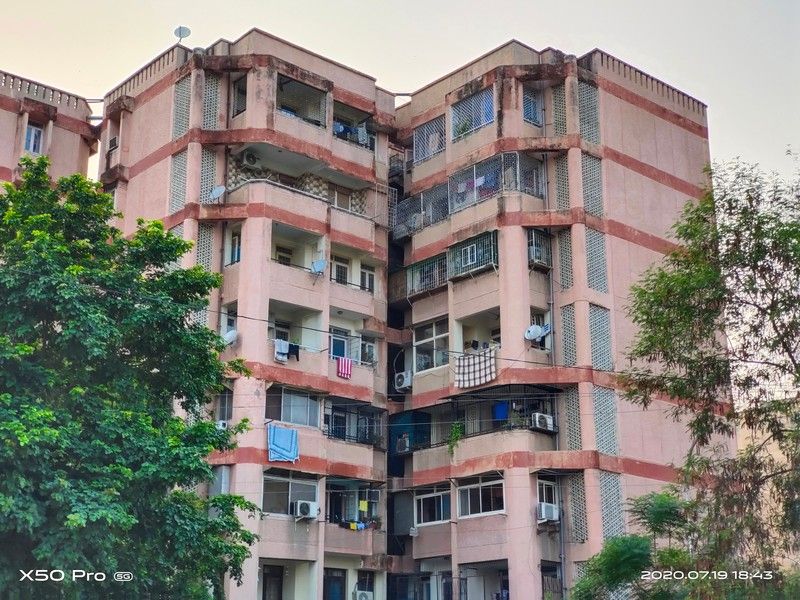
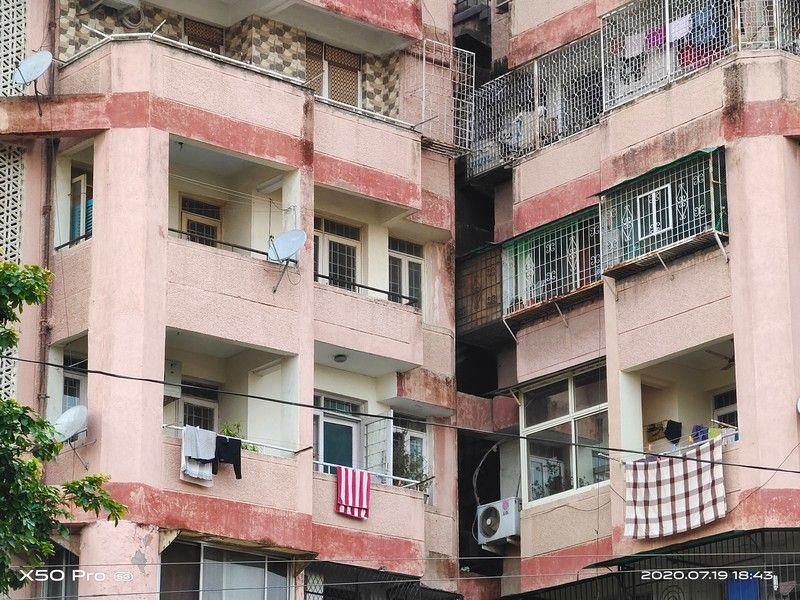
There are other sensors on the device as well, such as the 8MP ultra-wide sensor with a 120-degree field of view. It also has autofocus capabilities but doesn’t use the gimbal mechanism for super stable shots. Even so, I have been favourably impressed by the correct colour temperature in the shots along with detailing. The 13MP telephoto camera is being called as the portrait camera and its main job is for depth detection for bokeh shots. The photos are quite colour rich with a nice soft blur. The last is an 8MP periscope lens with a small f/3.4 aperture capable of 5X optical zoom. Shots taken obviously lack the details of the primary sensor but are quite good nonetheless.
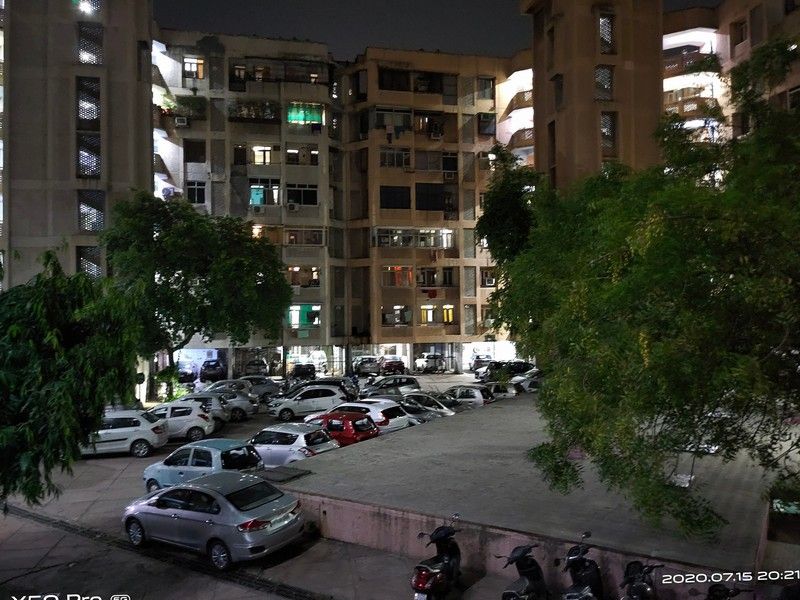
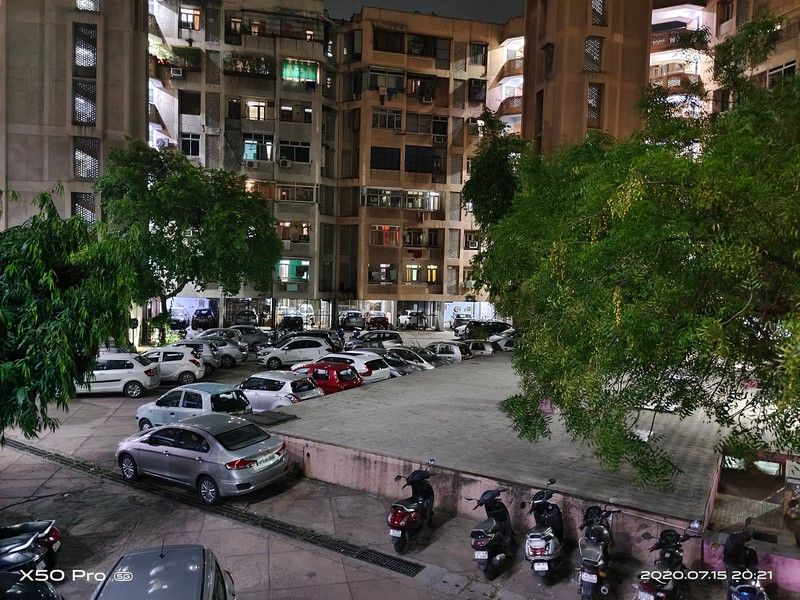
Night-time shots are also assisted by the presence of a gimbal. In general, the sensor is quite large which enables more light to enter the lens giving more details at night. Shots, in general, were focused with the exposure calibrated. The phone provides you with a Night Mode which adds a lot of light and details to the shot. Again it functions well with the gimbal system keeping the lens stable. The other sensors take a hit in low-lighting although in the case of the ultra-wide lens the Night Mode helps a lot. Vivo has touted the Astro Mode on the device which can be used to take long exposure shots of the night sky. Unfortunately owing to the monsoon season in Delhi the cloudy weather prevented me from testing this feature during my review period.
On the front of the phone, housed in the small punch-hole happens to be a 32MP sensor. While shots are quite colour rich and exposed, there is a significant amount of face smoothening that goes on. Portrait shots are quite good with the camera intelligently separating your face from the background.

Software and performance
- Chipset: Snapdragon 765G
- RAM: 8GB
- Storage: 256GB
- Software: Android 10 with FunTouch OS
The Vivo X50 Pro is the first phone in the Indian market to pack in the Qualcomm Snapdragon 765G chipset which naturally also gives it 5G capabilities. However, for the latter, currently and for the foreseeable future, there is going to be little to no use. The 765G is a powerful mid-range chipset from Qualcomm and the performance on the X50 Pro is quite good.

However, for a nearly Rs 50,000 price tag, the X50 Pro starts encroaching on premium territory where high-end chipsets like the Snapdragon 865 come into play. In terms of benchmarks, the X50 Pro gets single-core and multi-core scores of 624 and 1903, while on Antutu the score is 324,014. On PC Mark’s Work 2.0 test the device scored 8540. While on paper these are pretty good scores, against the likes of an OnePlus 8 (review) or an IQOO 3, both powered by the Snapdragon 865 and priced lower, the X50 Pro falls flat.

However, that is not to say that the X50 Pro lacks anything during day-to-day usage. App switching and opening of heavy-duty apps is fairly easy and happens without any lag. The 90Hz refresh rate assists in the perceived smoothness of the device as well. The single 8GB RAM variant on the device means that several apps can remain open in the background. For much more graphically intensive tasks such as PUBG Mobile, the device is suited to run at Extreme frame rate option but only when the graphics are set to the lowest. The HDR option, present on devices with a Snapdragon 855 or above, cannot be selected on the device. Even so, the gaming experience was quite pleasant on the device. Hardcore mobile gamers might want to look at the upcoming ASUS ROG Phone 3, or the OnePlus 8 for a better experience.

For authentication purposes, the phone has an in-display fingerprint sensor which is not the fastest I’ve seen, but gets the job done. A face unlock feature is also present but is less secure than the fingerprint sensor. Face authentication does work remarkably fast although there is no raise to wake feature on the phone, so you will have to use the power button to activate it. The X50 Pro has no headphone jack but the single bottom-firing speaker isn’t shabby either.

I have never been much of fan as far as Vivo’s FunTouchOS skin overlaying on Android is concerned. However, it seems that the Vivo has been listening to feedback over the past couple of years to make its software experience less like an iOS clone. To that end, the new FunTouch 10.5 is quite streamlined and more reminiscent of stock Android. There is an app drawer, all quick settings toggles can be seen by swiping down from the top, and the UI, in general, is quite easy to navigate.
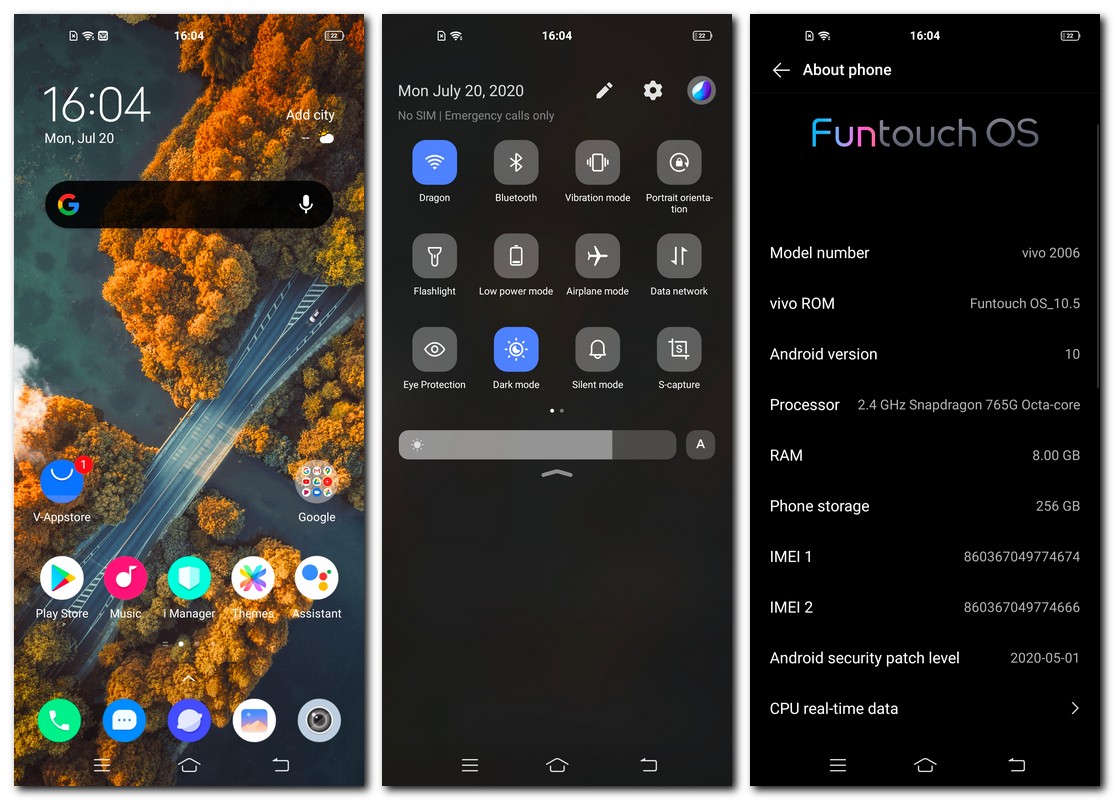
Bloatware is still an issue on the device with Vivo adding its separate Appstore along with the dual gallery, music, and browser apps. You can read more about FunTouch OS in our detailed review of the Vivo V19.
Battery
- Battery: 4,300mAh
- Charging: 33W fast charge
In terms of battery life, the Vivo X50 Pro packs in a 4,315mAh cell which is more than capable of pushing the device to a full day of usage without breaking a sweat. Our standard battery test, which loops a video on repeat at half brightness and volume, showed that the device lasted 21 hours which is more or less what you can expect from a phone of this battery capacity. Apart from that, about a 30-minute gaming session on the device drained the device by nearly 25 percent which is just about average. The phone does ship with a 33W fast charger that will juice up the phone in just over an hour. The first 50 percent of the battery is charged up in 30 minutes, which is slightly slower as compared to the likes of the OnePlus 8 which can do it in 20 minutes. There are no wireless charging capabilities on the device.
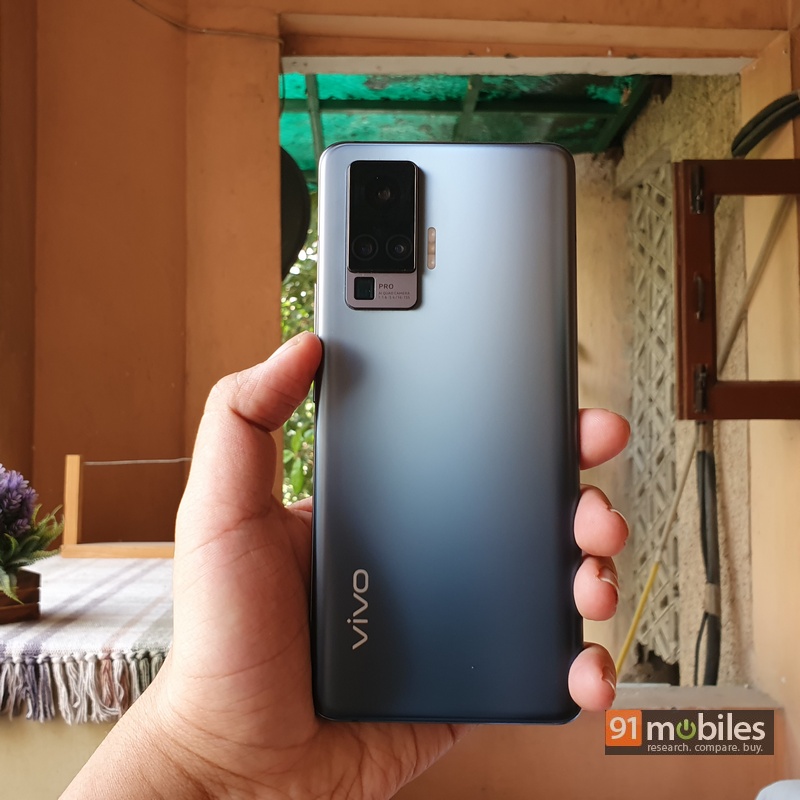
Final verdict
There is no denying that the Vivo X50 Pro has one of the best camera mechanisms seen on a modern phone. However, the question arises as to how many people are going to benefit from or use this feature. Is it worth spending Rs 49,990 when a cheaper phone like the OnePlus 8 or the iQOO 3 churn out decent photos and videos at significantly lower price tags, and offer better performance too? A fancy design and a more than capable camera doesn’t seem like a very good justification when you can get flagship features for a similar or lower price.

All this to say, that if smartphone photography is truly something that you take interest in and shoot a lot of photos and videos, then the Vivo X50 Pro seems to be an excellent choice. If you can skimp slightly on the camera part, you can consider buying a OnePlus 8, iQOO 3 or Realme X50 Pro (review), all of which boast a flagship chipset, great displays, and amazing battery life. The OnePlus Nord, which costs about half, is also a worthy option to consider.
Editor’s rating: 3.5 / 5
Pros
- Gimbal camera gives great stability
- Breathtaking design
- Smooth performance with Snapdragon 765G
Cons
- Pricing could have been better
- Bloatware
- No official IP rating

































![[Exclusive] iQOO is evaluating launch of gaming tablet in India Thumbnail](https://www.91-cdn.com/hub/wp-content/uploads/2024/04/Vivo-Pad-3-Pro-as-iQOO-Pad-2.png?tr=h-110,q-100,pr-true)
![[Update] Vivo V30e India launch date announced; key specifications and features revealed Thumbnail](https://www.91-cdn.com/hub/wp-content/uploads/2024/04/Vivo-V30e.jpg?tr=h-110,q-100,pr-true)






